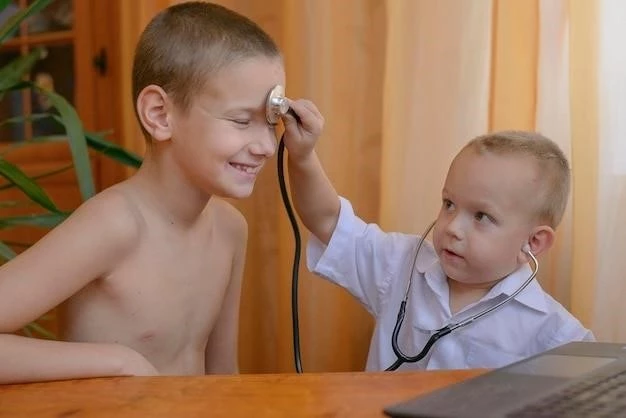Article Plan⁚ Disease ー Morrison–Young Syndrome
Introduction
Morrison-Young Syndrome is a rare condition that manifests with a triad of symptoms including chronic sinusitis, bronchiectasis, and obstructive azoospermia. The syndrome, similar to Kartagener Syndrome, primarily affects men. Understanding the historical background, symptoms, causes, and available treatment options is crucial in managing this condition effectively. Diagnosis involves a comprehensive evaluation of the symptoms and may include genetic testing. Seeking professional medical advice for proper diagnosis and treatment is recommended for individuals suspected of having Morrison-Young Syndrome.
Overview of Morrison–Young Syndrome
Morrison-Young Syndrome, a rare genetic disorder, is characterized by a combination of chronic sinusitis, bronchiectasis, and obstructive azoospermia primarily seen in men. Similar to Kartagener Syndrome, Morrison-Young Syndrome poses challenges in respiratory and reproductive health. Understanding the distinct triad of symptoms and seeking early diagnosis and treatment is essential for managing this complex genetic condition effectively.
Historical Background
First observed by Dr. Donald Young, Morrison–Young Syndrome, also known as sinusitis-infertility syndrome, is a rare inherited condition with a triad of symptoms⁚ chronic sinusitis, bronchiectasis, and obstructive azoospermia. Similar to Kartagener Syndrome, understanding the historical context of Morrison-Young Syndrome’s discovery and the naming process can provide insights into its management and treatment today.
Symptoms of Morrison–Young Syndrome
Morrison-Young Syndrome presents a triad of symptoms, including chronic sinusitis, bronchiectasis primarily affecting the lower lungs, and obstructive azoospermia. Patients may experience recurrent sinopulmonary infections, chronic rhinosinusitis, infertility due to vas deferens obstruction, and lung issues like bronchiectasis. Understanding and recognizing these symptoms early is crucial for accurate diagnosis and tailored treatment.
Causes and Risk Factors
Young Syndrome is a rare genetic disorder often caused by a combination of genetic and environmental factors. While the exact cause remains elusive, some studies suggest a link to possible exposure to mercury during childhood. Risk factors may include a family history of the syndrome. Further research is essential to determine the precise genetic mechanisms and environmental triggers contributing to the development of Young Syndrome.
Diagnosis of Morrison-Young Syndrome
Diagnosing Morrison–Young Syndrome involves a detailed evaluation of the characteristic triad of symptoms⁚ chronic sinusitis, bronchiectasis, and obstructive azoospermia; Medical professionals may conduct various tests, including genetic testing and imaging studies, to confirm the presence of these symptoms. Early detection and accurate diagnosis are crucial for effective management and treatment of this rare genetic condition. Consulting with healthcare providers who specialize in genetic disorders is recommended for a comprehensive evaluation and diagnosis.
Treatment Options

The management of Morrison-Young Syndrome involves a multidisciplinary approach to address the triad of symptoms effectively. Treatment options aim to alleviate chronic sinusitis with appropriate medications and sinus surgeries if necessary. Bronchiectasis may require airway clearance techniques, antibiotics for infections, and lung therapies. Azoospermia might involve assisted reproductive technologies for fertility. It is essential to consult with healthcare providers specializing in genetic disorders for personalized treatment plans.
Prognosis and Complications
Individuals with Morrison-Young Syndrome, characterized by chronic sinusitis, bronchiectasis, and obstructive azoospermia, may face challenges in respiratory health, fertility, and overall quality of life. Complications can include recurrent infections, lung function impairment, and infertility issues. Early diagnosis and personalized treatment plans can help manage symptoms and potentially improve outcomes for individuals with Morrison-Young Syndrome. Seeking ongoing medical care and support from healthcare professionals specializing in genetic disorders is essential for long-term prognosis.
Research and Studies on Morrison–Young Syndrome
Research on Young Syndrome, also known as sinusitis-infertility syndrome, continues to explore the genetic and environmental factors contributing to this rare inherited disorder characterized by chronic sinusitis, bronchiectasis, and obstructive azoospermia. Studies delve into the potential association of mercury exposure during childhood with the syndrome and aim to enhance understanding of the underlying mechanisms and effective management strategies for individuals affected by Young Syndrome. Continued research plays a vital role in advancing knowledge and improving outcomes for those with this complex genetic condition.
Support for Individuals with Morrison–Young Syndrome
Individuals diagnosed with Morrison-Young Syndrome, a rare genetic condition, may benefit from seeking support from healthcare professionals, genetic counselors, and support groups specialized in genetic disorders. These resources can offer valuable information, emotional support, and guidance on managing this complex syndrome. Additionally, connecting with other individuals or families affected by Morrison-Young Syndrome can provide a sense of community and shared experiences, enhancing coping strategies and overall well-being.

Prevention Strategies
While Morrison-Young Syndrome is a rare genetic disorder with complex symptoms, there are few known prevention strategies due to its genetic nature. However, individuals with a family history of the syndrome may benefit from genetic counseling to understand potential risks and explore reproductive options. Early diagnosis and proactive management of chronic sinusitis and bronchiectasis can help mitigate complications associated with the syndrome. Maintaining overall health and seeking regular medical check-ups may aid in early detection and management of any emerging symptoms.
Conclusion
In conclusion, Morrison-Young Syndrome, characterized by chronic sinusitis, bronchiectasis, and obstructive azoospermia, poses challenges to respiratory health, fertility, and overall well-being. Early diagnosis, personalized treatment plans, and ongoing support from healthcare professionals and support groups play a crucial role in managing this rare genetic condition. Continual research efforts are vital to enhance understanding, treatment strategies, and outcomes for individuals affected by Morrison-Young Syndrome. Stay informed, seek specialized care, and engage in a supportive community to navigate the complexities of this syndrome effectively.
